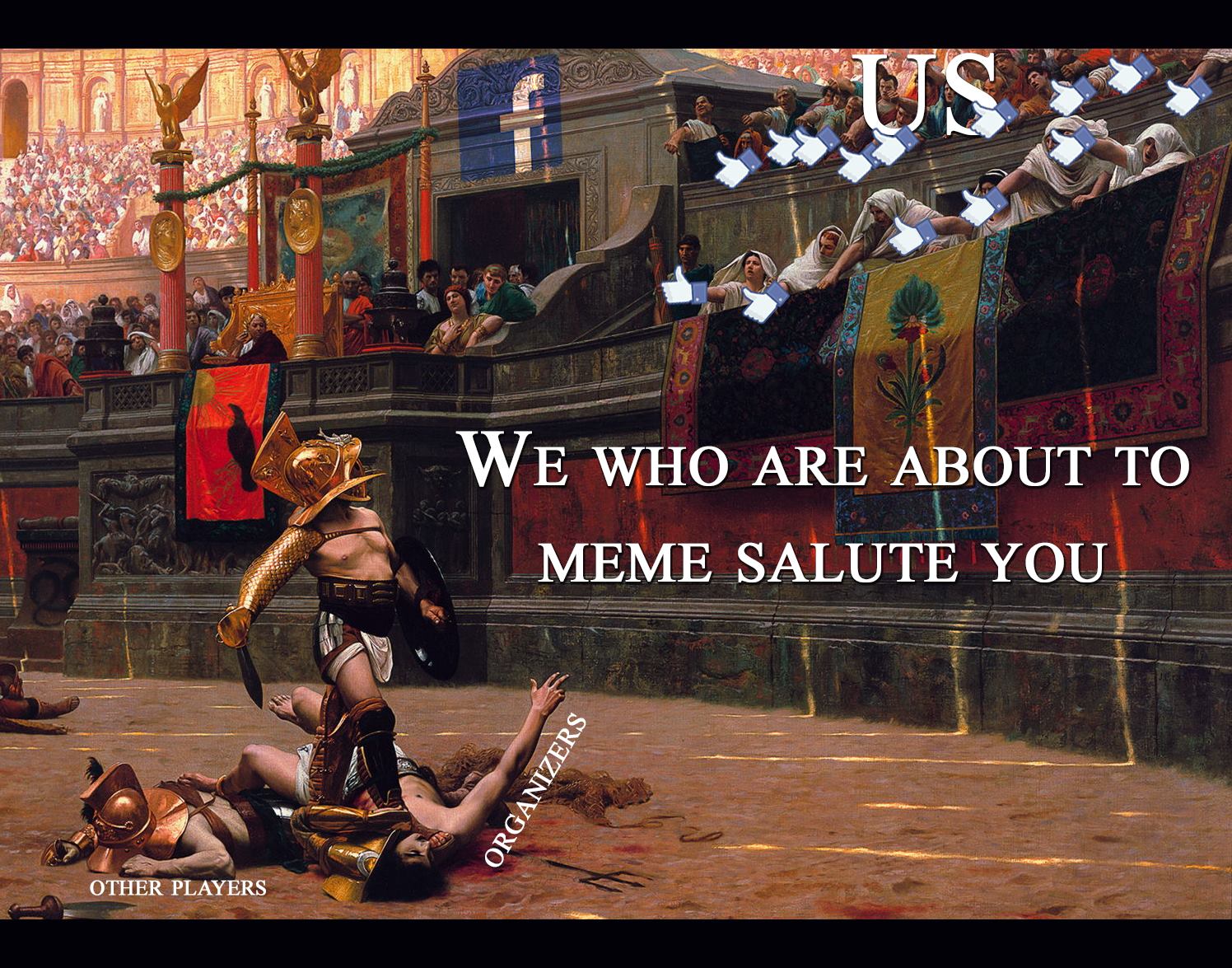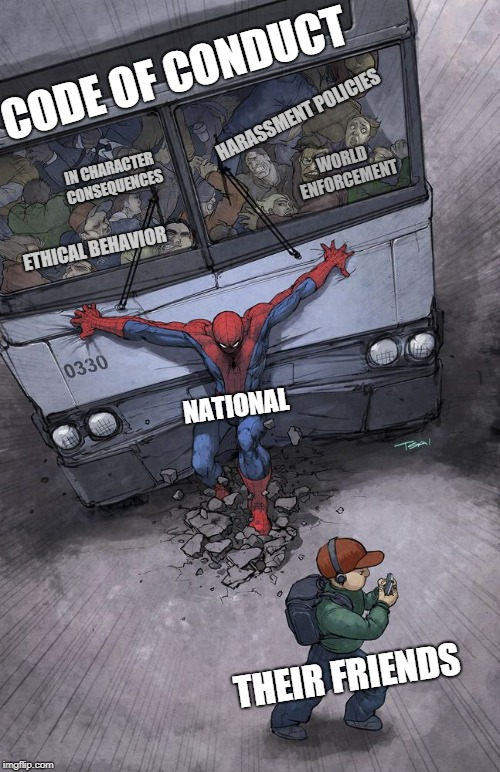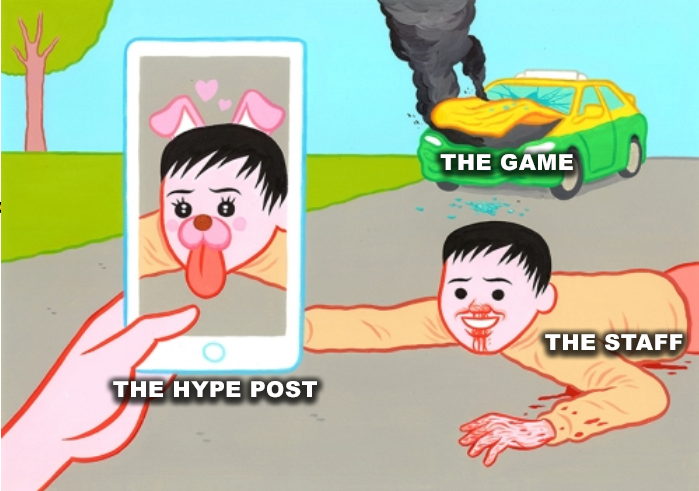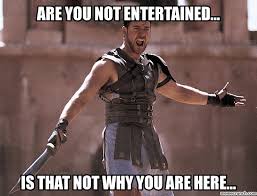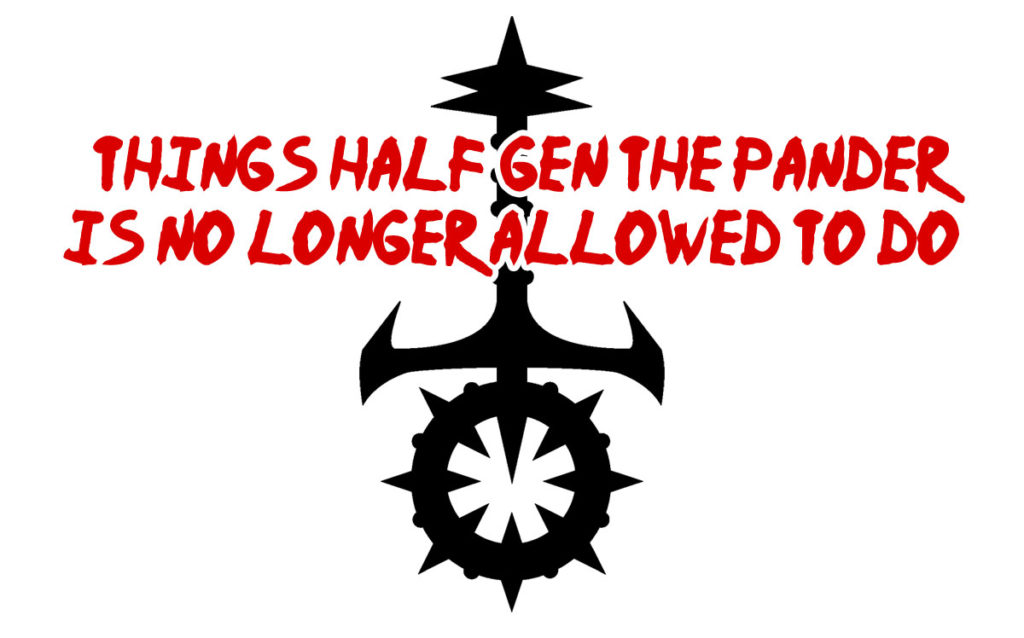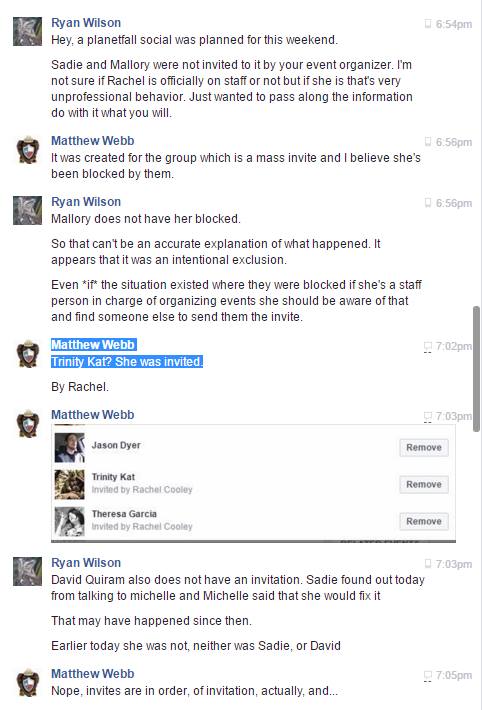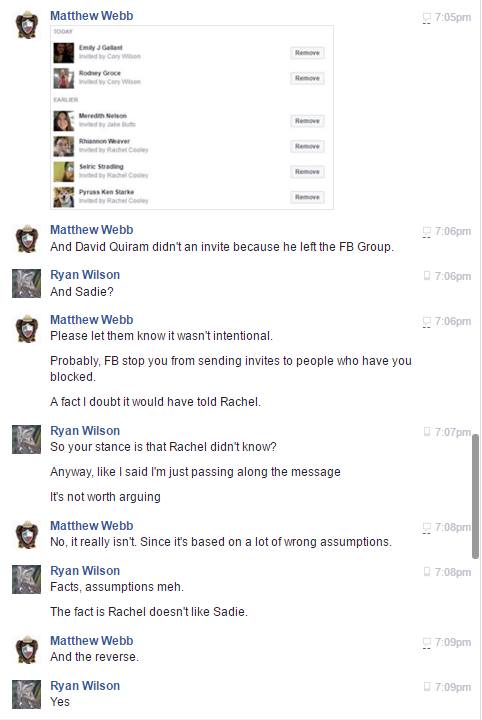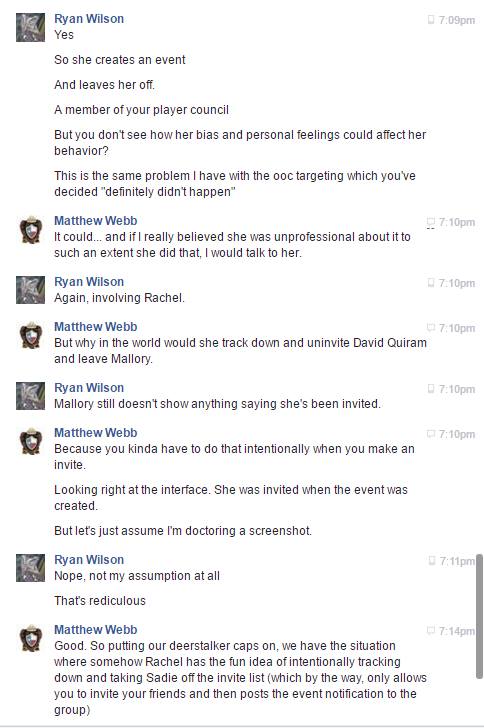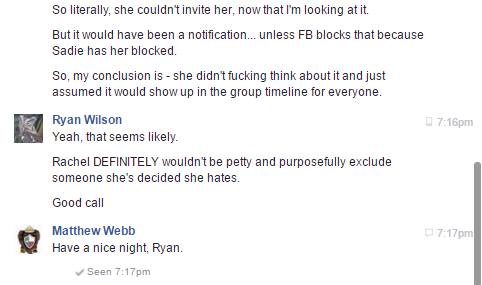What’s going on surrounding the drama of character conflict and death in Vampire LARP is based in a deeper issue about what a LARP or an RPG is.
“By making a character, you agree to CvC.”
This is a pretty old refrain in every game with permadeath, and I’ve heard it in everything from Vampire to boffer. CvC stands for ‘character vs. character conflict’, also known as PvP for ‘player vs player’, and is usually used in terms of characters being killed by other player character. But I am not actually agreeing to CvC. Neither are you. None of us are.
Not boundless CvC.
When you play a LARP or any RPG, you are agreeing to participate in a shared fantasy with common standards. A fantasy without common standards isn’t really shared. There’s a cool book by Gary Alan Fine called Shared Fantasies published in 1983. It is one of the first serious academic books on RPGs. He identifies the following as a core component of what makes an RPG function –
“Because gaming fantasy is based in shared experience, it must be constructed through communication. This communication is possible only when a shared set of references are available and exist for key images; and a clear set of expectations exist for which actions are legitimate.”
– Shared Fantasies: Role Playing Games as Social Worlds
When we agree to play Vampire the Masquerade, Monsterhearts or Bunnies and Burrows, we are agreeing to participate in a shared fantasy world with a set of expectations and references determined by the source material and the staff. One of those expectations in Vampire is the possibility of legitimate character death. But it is not the only expectation, and that word legitimate is really important. If other expectations are violated and those key references aren’t upheld, everything risks being delegitimized.
So, no, we aren’t agreeing to CvC. We’re agreeing to a shared world that includes CvC but where there are expectations as much on the aggressor as anyone else to uphold all the other key expectations of the shared fantasy world. When someone believes these expectations are violated and that leads to a character death, it delegitimizes the death in their mind.
And that’s when the problem starts.

If you want the crunchy bit of the rules as the only shared consensus, that’s fine. But nothing about Vampire the Masquerade sells the game as a sport with no other expectations. What it does sell itself as is a byzantine political drama and undead soap opera. While death is accepted, it is only accepted within the context of those references and expectations by a large number of players.
Ludonarrative Dissonance and Breaking the Contract
Ninety percent of the drama I see in LARP is from a fun vocab word – ludonarrative dissonance, when the realities and rules of the game do not match the expectations set for the story being told. The other ten percent are unpopular or unlikely shifts in the narrative in a way that seriously alters the experiences of the players, or just conflicts of personality.
To reduce ludonarrative dissonance, it’s not about banning CvC or allowing only consensual character death. It is about analyzing and clearly setting the expectations of the shared fantasy you are creating with each other. It means educating the players and reiterating those expectations to players that violate them, and in some cases, removing them if they are unable to abide by the shared fantasy you are trying to create.
In the original blog post that coined the term ludonarrative dissonance, Clint Hocking says that a game makes two contracts with the player – the ludic contract and the narrative contract. The ludic contract defines what are viable courses of action within the rules. The narrative contract defines what the fiction we are creating is. You have to have both to have a role-playing game.
So if the only expectations you want to exist are the crunchy rules, where only the ludic contract is honored, you are going to be in for a rocky ride. The audience for that is actually quite small. Competitive sheet building with pro-wrestling style shit-talking weirdly laced with game world terminology isn’t much of a role-playing game. It’s like curling – it strains to be interesting as a sport and its appeal is confusing to outsiders. And like curling, there’s nothing wrong with it, but it’s for a rather niche audience and I’m wondering why it is being featured so prominently sometimes.
If you violate the narrative reference points for a player, you will be just as much as a cheater in their mind as if you lied about what’s on your sheet. You have broken the narrative contract that they made when they invested time and energy into the game. It might not be fair, but that is what is going to happen. You will be the bad guy, the person who not only broke a deal but never got punished for it.
Chimpanzees beat the crap out of each other for things like that. It’s deep in our social instincts to seek disproportionate amounts of retribution for those who get away with breaking the social expectations and rules of a group. Especially when a deal is broken. We go full Thunderdome.
And saying you don’t like it and it shouldn’t happen isn’t going to stop the fundamental anger and social reprisal from happening. But upholding, reinforcing and communicating the other expectations of the game will help more than anything else will. Especially when the narrative contract tells you what you cannot do, beyond what is just on a sheet or in the rulebook.
Matthew Webb organizes live action roleplaying (LARP) events with his team at Jackalope Live Action Studios in Austin, TX. He can be found on Facebook and Twitter. Learn about their upcoming events by following Jackalope Live Action Studios on Twitter (@JackalopeLARP) and Facebook. All opinions here are his and his alone.
